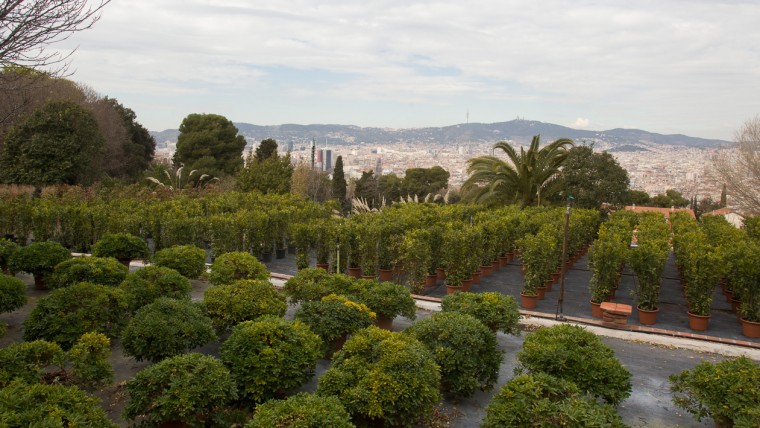
This plant nursery lies on the north-west slope at the top end of Montjuïc, making the most of the terraces and banking to cultivate and store plants intended for landscaping Barcelona.
The oldest part has greenhouses, shade houses and spaces full of flower pots, while the new part has large terraces for plant stocks and plots used for experiments.
The Viver Tres Pins has an annual production of nearly 225,000 shrubs and perennials cultivated from cuttings and seeds, such as cheesewoods, crassulas, ivy, asparagus and privet, to name a few species. There are also two tunnels: one for producing plants and the other for conserving stocks.

History
This place was a picnic area at the start of the 20th century, known as the Font dels Tres Pins (after a fountain that still flows inside the nursery), where families would get together to spend a day in the open air or hold communal festivities, such as the “sardine burial”. In the 1920s it was turned into an area for supplying Barcelona with plants for the International Exposition of 1929. Later it was turned into the first municipal plant nursery producing plants for the city’s green areas and is currently the only one left in Barcelona.

Art and Architecture
Towards the middle, more or less, of the new part there is a small strip on the path that is full of sculptures. This is known as the Petra Kelly Garden, after the German ecologist who was one of the founders of the Green Party in 1979. As you walk up, you will see a small terracotta sphere on the right, embraced by a female figure just as Petra Kelly embraced the Earth’s cause. It was put here on Earth Day in 1993, with Kelly’s favourite tree, a cherry tree, planted behind.
Just opposite, on the other side of the path, there is a small stone monolith dedicated to the another German, the sculptor Joseph Beuys, who incorporated the principles of ecology into his works. The monolith stands in front of a holm oak and next to one of the Tres Pins’ three most valuable trees, for its age and rarity: a showy honey-myrtle (Melaleuca nesophila) some 500 years old.
-
- Titularity
- Public center
- Address:
- Av Miramar, 2
- Districte:
- Sants-Montjuïc
- Neighborhood:
- el Poble-sec
- City:
- Barcelona

